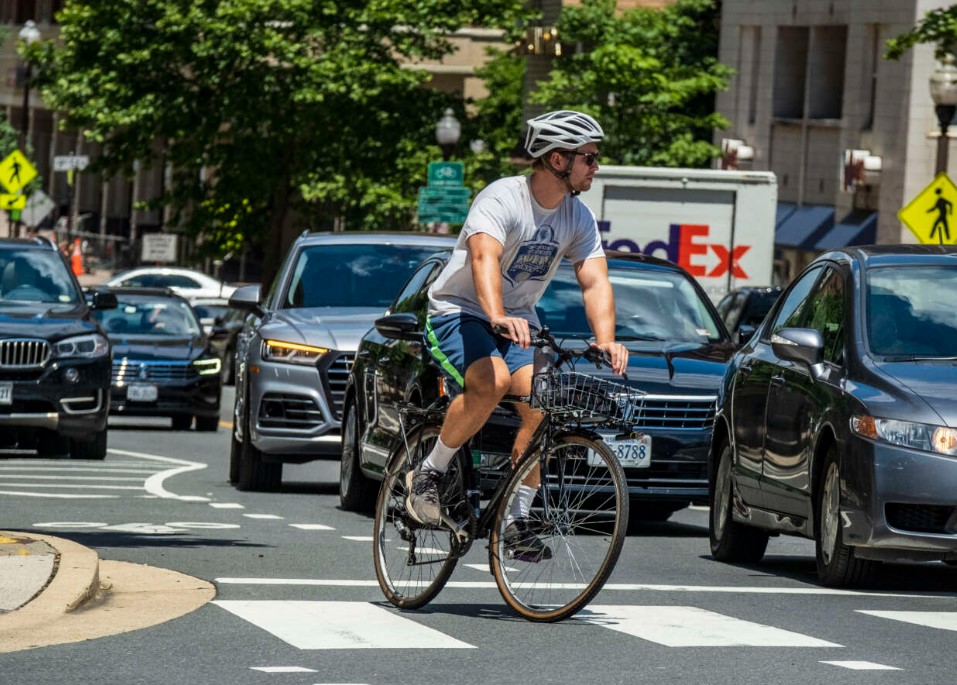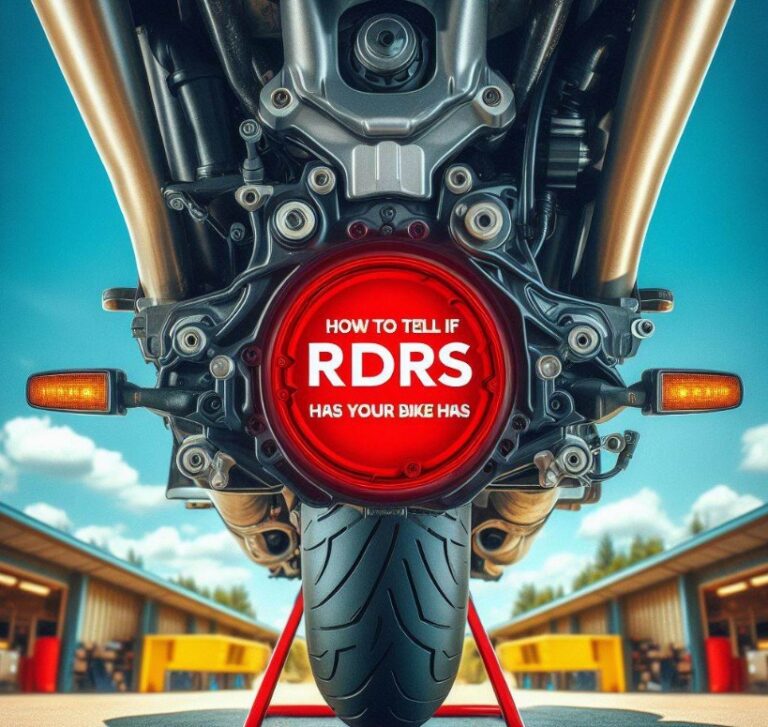Is A Person On A Bike A Pedestrian? Answered
When pondering “Is A Person On A Bike A Pedestrian?” it’s crucial to delve into the nuances of road usage and safety regulations. This question not only sparks curiosity but also highlights the importance of understanding how different road users are classified. By exploring this topic, we aim to clarify the distinctions and commonalities between pedestrians and cyclists, ensuring that our roads remain safe and accessible for all.
Key Takeaways
- Bicyclists are not traditionally considered pedestrians.
- Laws and definitions vary by jurisdiction.
- Understanding these distinctions is crucial for road safety and legal purposes.
Is A Person On A Bike A Pedestrian?
No, a person on a bike is not typically considered a pedestrian. Pedestrians are defined as individuals traveling on foot, while bicyclists are regarded as vehicle operators due to their speed and the nature of bicycle use, necessitating distinct regulations and infrastructure.

Understanding Road User Definitions
Pedestrians Defined
Pedestrians are typically defined as individuals traveling on foot. This clear-cut definition underscores the primary mode of movement, which is walking. However, the definition can extend to those using mobility aids, such as wheelchairs, emphasizing the pedestrian’s vulnerability compared to motorized vehicles.
Bicyclists: A Separate Category
Bicyclists, on the other hand, use bicycles for transportation, placing them in a distinct category. They often share road space with motor vehicles and sometimes pedestrians, but their speed and mobility necessitate different regulations and infrastructure, such as bike lanes.
Legal Perspectives and Safety Regulations
Variations in Law
Laws regarding bicyclists and pedestrians vary significantly across regions. In some areas, cyclists are allowed to use sidewalks, blurring the lines between pedestrian spaces and cycling zones. It’s vital to consult local laws to understand the rights and responsibilities of bicyclists in pedestrian areas.
The interaction between pedestrians and bicyclists in shared spaces calls for strict safety protocols. Both groups must be aware of their surroundings, use designated paths where available, and signal their intentions to prevent accidents.
The Impact of Infrastructure on Road Safety
Designing for All Users
Infrastructure plays a key role in defining how bicycles and pedestrians share spaces. Well-designed bike lanes, pedestrian paths, and shared-use trails contribute to the safety and efficiency of road use for everyone.
Challenges and Solutions
Despite best efforts, conflicts can arise in shared spaces. Addressing these challenges involves continuous improvements to infrastructure, education on-road use etiquette, and enforcement of laws designed to protect all road users.
Cultural and Social Factors Influencing Road Use
Perceptions of Bicyclists and Pedestrians
Cultural attitudes towards bicyclists and pedestrians can greatly influence their interactions. In cities with a strong biking culture, for example, there tends to be a higher level of respect and understanding between different road users.
Promoting Mutual Respect
Encouraging mutual respect among road users is key to harmonious coexistence. Awareness campaigns and community engagement can help foster a culture of safety and consideration.
Technological Advances and Road User Safety
Innovations in Safety
Technological advances, such as improved lighting for bikes and pedestrians, wearable tech, and smart infrastructure, are enhancing road safety. These innovations make it easier for pedestrians and bicyclists to share spaces safely.
The Future of Urban Mobility
As cities evolve, so too does the landscape of urban mobility. Integrating new transportation modes with traditional road use requires adaptive strategies to ensure that all users can navigate safely and efficiently.
Is A Bicyclist Considered A Pedestrian?
Bicyclists are generally not considered pedestrians, although this can vary depending on local laws and regulations. The primary distinction lies in the mode of transportation: pedestrians travel by foot, while bicyclists use bicycles, which allows for greater speed and requires the use of roads or specific bike paths.

In jurisdictions where the law is specific, bicyclists are required to adhere to rules governing bicycle use, which differ from those for pedestrians.
For example, while pedestrians use sidewalks and crosswalks, bicyclists may be required to use bike lanes or roads, unless local laws permit sidewalk riding under certain conditions. The differentiation is crucial for safety regulations, right-of-way, and traffic flow management.
What Is The Difference Between A Pedestrian And A Cyclist?
The key difference between a pedestrian and a cyclist is the means of mobility. Pedestrians move by walking or running and are thus more vulnerable in traffic situations. They primarily use sidewalks, footpaths, and crosswalks designed for safe walking.

Cyclists, on the other hand, use bicycles, which allows them to move at higher speeds and requires them to follow a different set of traffic rules. Cyclists are often required to use bike lanes or share the road with motor vehicles, adhering to traffic laws that apply to wheeled vehicles, such as signaling turns and stopping at traffic signals.
This distinction is important for urban planning and the creation of infrastructure that ensures the safety and efficiency of all road users.
What Would Be Considered A Pedestrian?
A pedestrian is typically defined as any person traveling on foot, whether they are walking, jogging, or running. This definition can also extend to individuals who use mobility aids, such as wheelchairs or walkers, reflecting the broad range of people who navigate their environment without the use of a motorized vehicle.
Pedestrians use sidewalks, crosswalks, footbridges, and paths designated for foot traffic. The definition underscores the need for safe, accessible infrastructure that protects pedestrians from vehicular traffic.
It also highlights the necessity of legal and urban planning frameworks that prioritize pedestrian safety through crosswalks, pedestrian signals, and traffic calming measures to reduce vehicle speeds in areas with high foot traffic.
Conclusion
In conclusion, the distinction between bicyclists and pedestrians is crucial for the development of laws and infrastructure that cater to the safety and efficiency of both groups.
While they share the common goal of navigating urban spaces, their differing modes of travel require specific considerations to ensure harmonious coexistence. Understanding and respecting these differences is key to fostering a safe and inclusive environment for everyone on the road.
People Also Ask
How does urban planning affect the safety of cyclists and pedestrians?
Urban planning plays a crucial role in the safety of cyclists and pedestrians by designing cities that prioritize non-motorized transportation. This includes creating comprehensive networks of bike lanes, pedestrian zones, and traffic-calmed streets, as well as integrating public transportation options to reduce vehicle dependence and enhance overall safety and mobility for non-motorized road users.
What are the benefits of cycling infrastructure for pedestrian safety?
Cycling infrastructure, such as protected bike lanes and traffic-calming measures, benefits pedestrian safety by reducing conflicts between cyclists and pedestrians, decreasing sidewalk riding, and slowing vehicle speeds in shared areas, leading to a safer environment for all.
Are electric bikes treated as bicycles or motor vehicles?
Electric bikes, or e-bikes, are generally treated as bicycles in many jurisdictions, but there are specific regulations regarding their speed, power output, and where they can be ridden. Some areas might restrict e-bikes from certain paths or require them to follow rules similar to motor vehicles.
How can pedestrians and cyclists coexist safely?
Pedestrians and cyclists can coexist safely through mutual respect, awareness, and adherence to road laws and etiquette. This includes using designated paths, signaling intentions, yielding right-of-way when appropriate, and being mindful of each other’s space and safety needs.

Welcome to the exhilarating world of Matt Rex, a professional car racer turned renowned vehicle enthusiast. Immerse yourself in his captivating blog as he shares heart-pounding adventures, expert reviews, and valuable insights on cars, trucks, jets, and more. Fuel your passion for speed and discover the beauty of vehicles through Matt’s engaging stories and meticulous expertise. Join the ever-growing community of enthusiasts who find inspiration and expert advice in Matt Rex’s blog—a digital hub where the thrill of speed meets the pursuit of knowledge.






